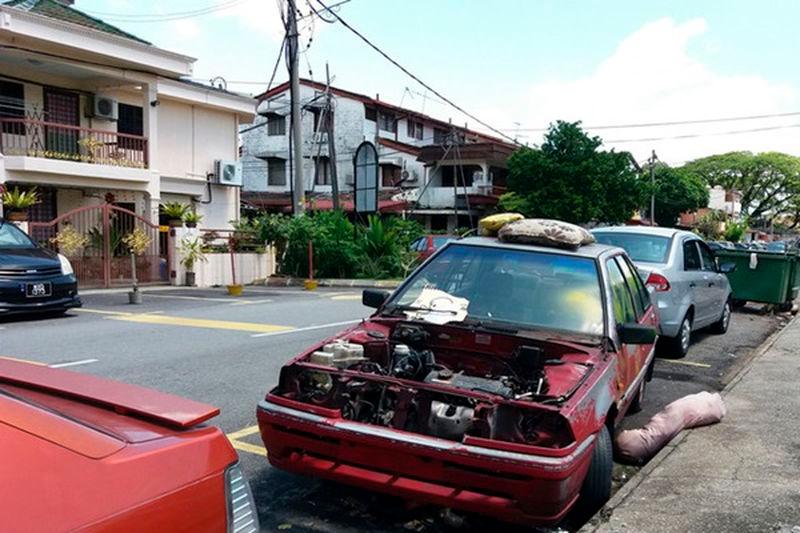LARGE numbers of unused cars occupy the same spots along urban roads, streets, lanes, open spaces and roadsides in residential areas.
These vehicles, left for months or even years, are not only eyesores but also take up valuable parking space and contribute to the broken window theory.
This theory suggests that visible signs of crime, antisocial behavior and civil disorder create an environment that encourages further crime, misbehavior and disorder, including serious offenses.
A clear example is the occupation of public spaces by abandoned cars, which is widespread throughout the country due to gross negligence and apathy by city, municipal and district councils.
If local authorities are hindered by existing laws amendments should be introduced to allow them to tow and dispose of vehicles parked in public spaces if their road tax has expired for more than six months.
Vehicles that remain unclaimed after three months could be auctioned off.
This approach would free up many public parking lots, including those without parking fees, currently occupied by abandoned cars for extended periods.
While it is acceptable for cars to be parked by the roadside in residential areas without designated parking lots, they should not be left there permanently, especially if their road tax has expired.
These vehicles should be towed away.
In some developed countries or cities, car buyers must provide proof of a private parking space before purchasing a new or used vehicle.
Regardless of such regulations, vehicles with or without road tax should be towed if they are parked too close to junctions or traffic lights, as they obstruct traffic flow and endanger other road users.
Double parking is common on busy streets and may be tolerated if drivers quickly move their cars after hearing honking.
However, it is unacceptable for drivers to simply leave their phone numbers on the dashboard and expect others to call them to move their vehicles.
Similarly, motorcycles should be parked alongside five-foot ways, not across them, as blocking these sheltered walkways forces pedestrians onto pavements or streets, exposing them to the sun, rain, or traffic.
When sidewalks are occupied by hawkers pedestrians may be forced into the road, increasing their vulnerability to snatch thieves and passing vehicles.
Walking against traffic also creates danger as drivers reversing out of parking spots may not see pedestrians approaching from the opposite direction.
Finally, some individuals treat public parking lots in front of their business premises as private property, denying others by placing objects such as traffic cones, chairs, stools, dustbins or flower pots to block access.
This also applies to reserved lots marked with red lines, which should be available to the public after office hours, on Sundays and public holidays.
However, some business owners place signage or metal stands on these reserved lots to prevent others from parking 24/7.
City, municipal, and district councils are also complicit in allowing motor workshops to operate in shop houses on busy streets.
These operators often block unreserved parking spaces near their premises, which can be numerous for corner lots, preventing motorists from using them.
Comments: letters@thesundaily.com









